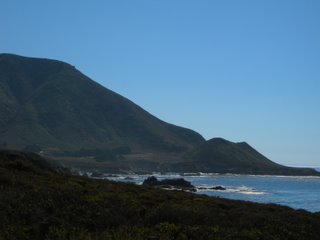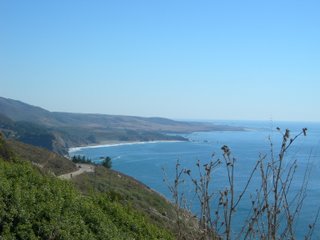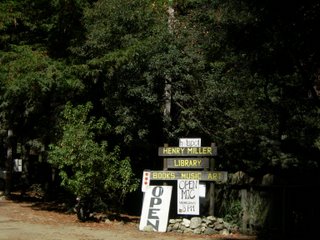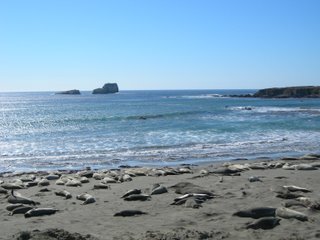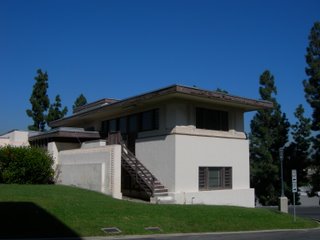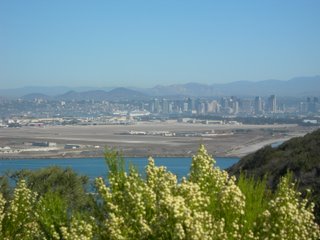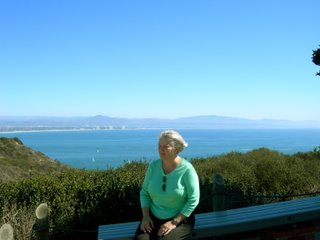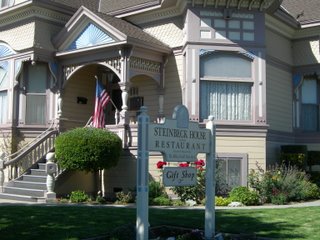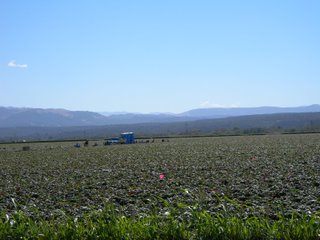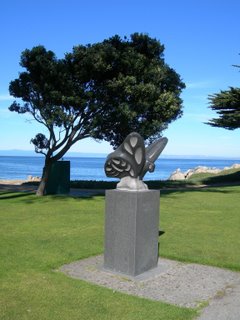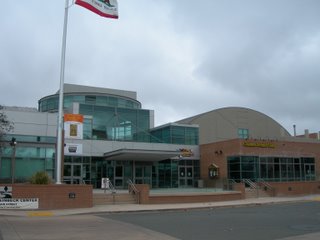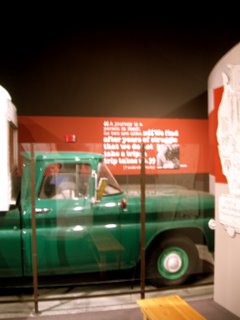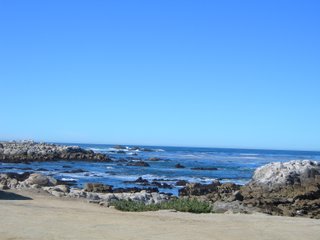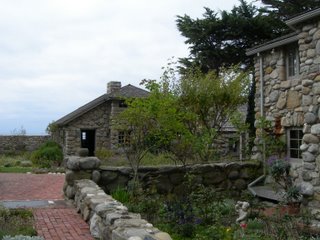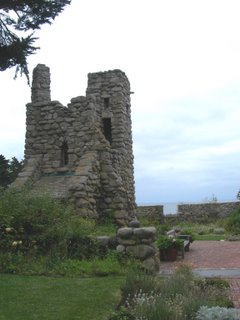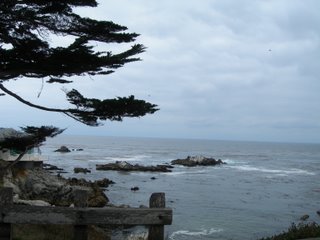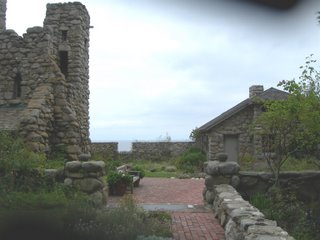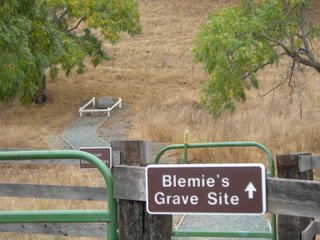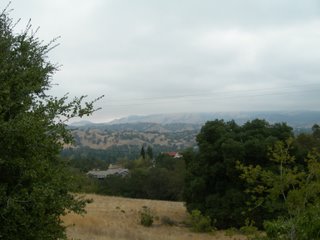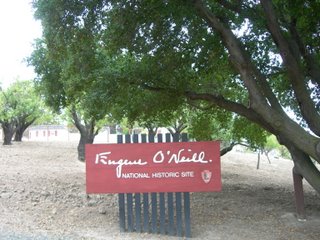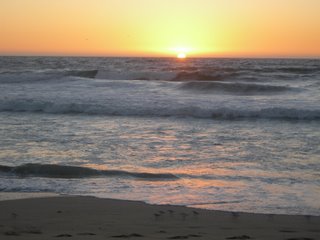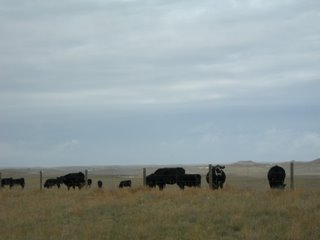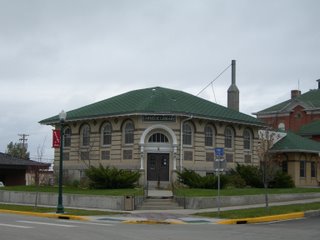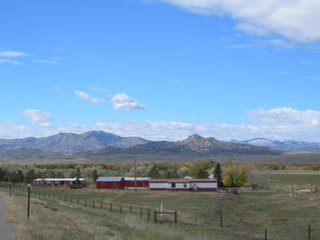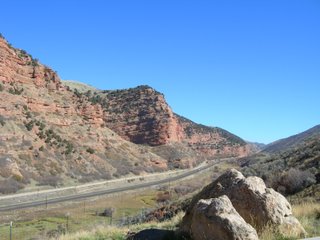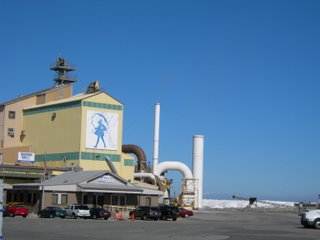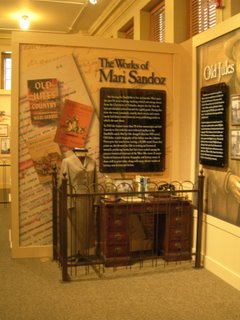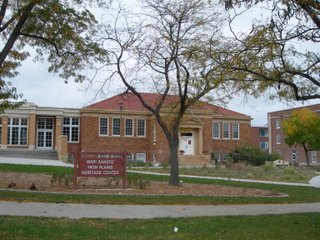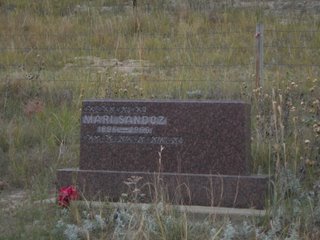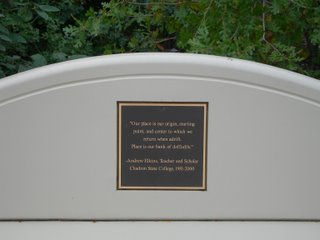The Road Home: Across the Desert and into the Trees

Heading east from Point Loma and Coronado in San Diego, Interstate 8 goes up into the Laguna Mountains past the Campo and Manzanita Indian Reservations and their casinos. The change is dramatic in altitude and topography from the coast so that it isn’t unusual for the temperature to be 20 degrees cooler in Julian or Cuyamaca than it is in the eastern San Diego suburbs. During part of the year, you can walk and sun yourself by the sea at Ocean Beach in San Diego in the morning and then ski or play in the snow in the mountains in the afternoon- a very unexpected combination of activities for an Easterner. Moving across the crest of the mountains, you begin the descent into the Sonoran Desert. In twenty miles, the road drops from 5000 ft to sea level, and the temperatures reflect the difference. The land here is desert and one of America’s most productive agricultural "deserts" is Imperial County. Irrigation has changed the West and altered the water table. When you leave the lush irrigated patchwork of fields and pass the vast Imperial Dunes for the push toward the Colorado River and Yuma, the land is flat and the arid environment sports ocotillo and cactus. The Colorado River, which flows dramatically through the Grand Canyon, is more like a creek by the time it reaches Yuma on the California/Arizona/Mexico Border.
Through Arizona, the desert is vast and beautiful.
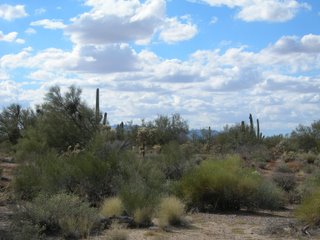 The vegetation is sparse but alters notably as you move through the micro climates and changes in ground water and altitude. Lush irrigated lands emerge as part of the landscape and then the landscape reverts to tumbleweed or saltbush. Exits on the interstate are coveted and businesses crowd the well spaced intersections usually sporting some unique experience or spot such as Arizona Dateland with its featured date palms and distinctive if cloyingly sweet date shakes. Anything to break the long sameness of the journey is in order.
The vegetation is sparse but alters notably as you move through the micro climates and changes in ground water and altitude. Lush irrigated lands emerge as part of the landscape and then the landscape reverts to tumbleweed or saltbush. Exits on the interstate are coveted and businesses crowd the well spaced intersections usually sporting some unique experience or spot such as Arizona Dateland with its featured date palms and distinctive if cloyingly sweet date shakes. Anything to break the long sameness of the journey is in order.Moving into the Gila Valley and Phoenix, the flat, empty landscape creates opportunities and an evolving storyboard of continuous sprawl with the “Fill in the blank” Ranch or Rancho subdivisions grouped precipitously and then punctuated by another gathering from the bag of ubiquitous chains such as Home Depot, Applebees, Wal-Mart, Old Navy, etc. The desert has been consumed with a whirlwind devolution of options touting the good life as far as the eye can see. The flat,nearly endless horizon only makes this urban encroachment all the more obvious and strangely incongruous.
 The destination here in the desert metropolis is Scottsdale and Taliesen West, Frank Lloyd Wright’s Arizona home created in the 30's as the winter headquarters for the Wright Fellowship and its school of architecture. At the edge of Scottsdale, for another few years anyway, Taliesen West is the rich and bigger brother of Taliesen East in Wisconsin. It was started as the winter tent camp headquarters and then expanded to meet the needs and artistic whims of the Great Architect. When the powerlines were installed between him and his view of the desert in the forties, he merely changed the orientation of each added building to be sure that the view was of the mountains to the east.
The destination here in the desert metropolis is Scottsdale and Taliesen West, Frank Lloyd Wright’s Arizona home created in the 30's as the winter headquarters for the Wright Fellowship and its school of architecture. At the edge of Scottsdale, for another few years anyway, Taliesen West is the rich and bigger brother of Taliesen East in Wisconsin. It was started as the winter tent camp headquarters and then expanded to meet the needs and artistic whims of the Great Architect. When the powerlines were installed between him and his view of the desert in the forties, he merely changed the orientation of each added building to be sure that the view was of the mountains to the east.  Taliesen West really wows the visitor. It is much more hands-on and displays more artifacts and facilities. Art of all sorts, a movie theatre, and gathering rooms to talk, work, and share music and ideas. Its style seems so in tune with the surrounding desert that it is not surprising that this creation flourished and grew faster than its Midwestern sibling. It is impressive and worth contemplating for its artistic blending with the desert landscape and the cultural history lesson that is so evident in the details of the place.
Taliesen West really wows the visitor. It is much more hands-on and displays more artifacts and facilities. Art of all sorts, a movie theatre, and gathering rooms to talk, work, and share music and ideas. Its style seems so in tune with the surrounding desert that it is not surprising that this creation flourished and grew faster than its Midwestern sibling. It is impressive and worth contemplating for its artistic blending with the desert landscape and the cultural history lesson that is so evident in the details of the place.From Arizona, it was across New Mexico into Texas. Ah, Texas- 900 miles of mostly flat, sometimes arid sometimes swampy landscape. West Texas is hauntingly beautiful.
 The Davis Mountains were stunning and quite a surprise after the flat desert. With the McDonald Observatory and a vista in every direction, these low slung Rocky Mountain remnants surprise and delight the eye.
The Davis Mountains were stunning and quite a surprise after the flat desert. With the McDonald Observatory and a vista in every direction, these low slung Rocky Mountain remnants surprise and delight the eye. 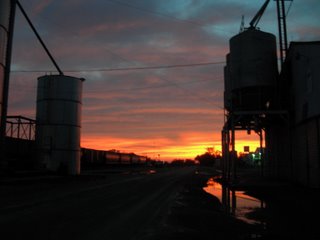 Moving across Texas is time consuming and yet interesting. The horizon beckons in every direction, and nature is king (and queen). We saw fabulous sunsets(Picture is near Cline, Texas), constantly changing vistas, and few trees. San Antonio is mushrooming in size with lots of new roads and developments. The downtown River Walk is still delightful (unreal, but delightful) and full of tourists and convention goers. This is a boom town with the river increasingly lined with chain restaurants and stores- the phenomenon played out in many spots coast to coast when rising rents force out small businesses. Houston has some amazing neighborhoods which are distinctive and beautiful, but the major roads are parking lots- I had enough of that in LA and deal with it all too frequently in DC. Houston seems to be even more recalcitrant than LA and DC in moving forward with mass transit playing a significant role in quality transportation.
Moving across Texas is time consuming and yet interesting. The horizon beckons in every direction, and nature is king (and queen). We saw fabulous sunsets(Picture is near Cline, Texas), constantly changing vistas, and few trees. San Antonio is mushrooming in size with lots of new roads and developments. The downtown River Walk is still delightful (unreal, but delightful) and full of tourists and convention goers. This is a boom town with the river increasingly lined with chain restaurants and stores- the phenomenon played out in many spots coast to coast when rising rents force out small businesses. Houston has some amazing neighborhoods which are distinctive and beautiful, but the major roads are parking lots- I had enough of that in LA and deal with it all too frequently in DC. Houston seems to be even more recalcitrant than LA and DC in moving forward with mass transit playing a significant role in quality transportation. And then Louisiana. We passed through Cajun Country and fields of sugar cane and the destructive footprints left by Rita. This area is recovering slowly but deliberately from the "second" hurricane of '05. New Orleans is another story all together. Since Ashley began working for the Road Home Program in August, we have been very aware of the struggles of New Orleanians to reclaim and rebuild their city- and it is a struggle.
 There are parts of the city that are nearly back to normal, there are parts that are hobbled but growing, and there are parts that are still utterly deserted and broken. So many factors come into play. The real danger is that the rest of the country will forget that for many people, home is still rubble, fungus-infused furniture, and few options that will work.
There are parts of the city that are nearly back to normal, there are parts that are hobbled but growing, and there are parts that are still utterly deserted and broken. So many factors come into play. The real danger is that the rest of the country will forget that for many people, home is still rubble, fungus-infused furniture, and few options that will work. Ashley and her team co-workers have hope that "The Road Home Program" and the auxillary programs for rowners of rental units will make a difference
Ashley and her team co-workers have hope that "The Road Home Program" and the auxillary programs for rowners of rental units will make a difference and provide the boost that so many people need to be able to start and then get to the finish line in the rebuilding process.
and provide the boost that so many people need to be able to start and then get to the finish line in the rebuilding process. 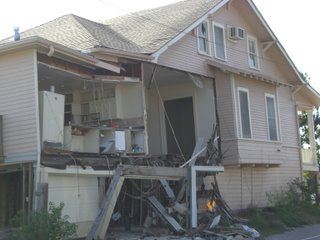 Only if all of us keep an eye on what is happening and demand answers and evidence of progress will the programs work and create some momentum to get life rolling again. There are so many wrenchingly sad stories that are made worse by the fact that generations of families and lives lived in this one of kind place are now endangered.
Only if all of us keep an eye on what is happening and demand answers and evidence of progress will the programs work and create some momentum to get life rolling again. There are so many wrenchingly sad stories that are made worse by the fact that generations of families and lives lived in this one of kind place are now endangered. 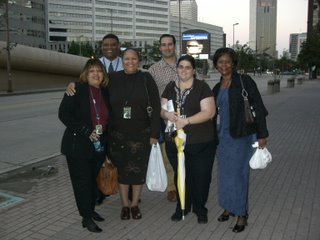 Everyone wants a higher, smarter rebuilding, but as usual, it is those who already lived on the edge who are put off, ignored, dehumanized and ultimately displaced and forgotten. I only hope that we not only ask the difficult questions about our response, but come up with some answers that will ensure that natural tragedies of this sort are not compounded by a response that was ineffective to the point of being bizarre and more of a second blow to people who were already down and out rather than a helping hand. There is always hope, but the obstacles are many. I keep thinking "We have met the enemy and it is us."
Everyone wants a higher, smarter rebuilding, but as usual, it is those who already lived on the edge who are put off, ignored, dehumanized and ultimately displaced and forgotten. I only hope that we not only ask the difficult questions about our response, but come up with some answers that will ensure that natural tragedies of this sort are not compounded by a response that was ineffective to the point of being bizarre and more of a second blow to people who were already down and out rather than a helping hand. There is always hope, but the obstacles are many. I keep thinking "We have met the enemy and it is us." 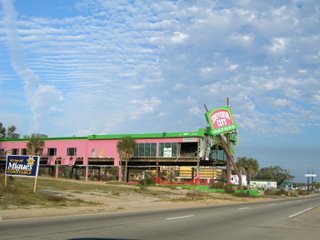
As we left the "Big Easy" and made our way across the Mississippi coast, we were again amazed at the destruction. There wasn't much left on the Mississippi coast to save- a horrendous loss and one of a different sort than they experienced in New Orleans with their failed levees and standing foul water.
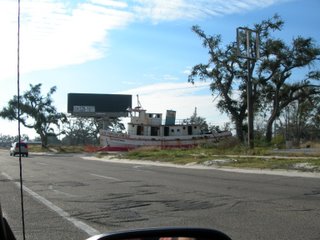 We passed through the lower South and spent one whole day in blinding rain as we navigated the mountains of east Tennessee. When we entered Virginia, the sun reappeared, and the autumn that was not so evident in the desert or along the Gulf Coast, burst forth. There are few places to surpass the splendor of the Shenandoah Valley in the fall. No wonder Sherwood Anderson found his final home in the town of Marion, Virginia where he edited the local paper (two papers actually) and wrote about the glories of small town life, an odd final chapter for the author of Winesburg, Ohio. Yet, even in that book with its themes of suffocation and defeat, there is an acknowledgement of possibilities and human potential even if in Winesburg, they went unrealized.
We passed through the lower South and spent one whole day in blinding rain as we navigated the mountains of east Tennessee. When we entered Virginia, the sun reappeared, and the autumn that was not so evident in the desert or along the Gulf Coast, burst forth. There are few places to surpass the splendor of the Shenandoah Valley in the fall. No wonder Sherwood Anderson found his final home in the town of Marion, Virginia where he edited the local paper (two papers actually) and wrote about the glories of small town life, an odd final chapter for the author of Winesburg, Ohio. Yet, even in that book with its themes of suffocation and defeat, there is an acknowledgement of possibilities and human potential even if in Winesburg, they went unrealized. So the circle is complete. Wrapped in the blaze of leaves, oak and maple, we return to what has been for us, for nearly thirty years, home. There is an inherent irony in a journey that searches for a place called home.
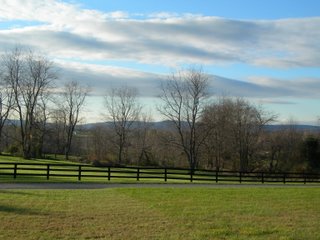 Home is an ideal. It is a state of mind. It is an internal emotional gauge, the creation of many experiences and eternal longings, which guides and informs us, and sometimes derails us. Home is our one-of-a-kind canvas, the base and inspiration for the indefatigable gleam of meaning which defines each of us. Home is physical but far more and always changing to reflect our ideal port and harbor, uniquely personal and yet profoundly and inevitably shared.
Home is an ideal. It is a state of mind. It is an internal emotional gauge, the creation of many experiences and eternal longings, which guides and informs us, and sometimes derails us. Home is our one-of-a-kind canvas, the base and inspiration for the indefatigable gleam of meaning which defines each of us. Home is physical but far more and always changing to reflect our ideal port and harbor, uniquely personal and yet profoundly and inevitably shared.

